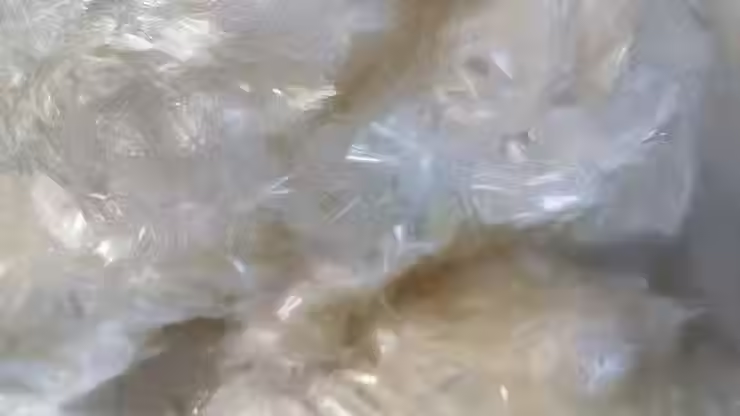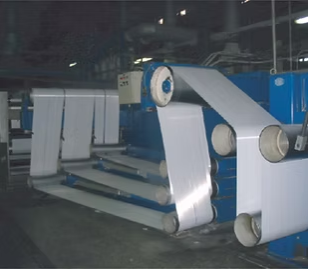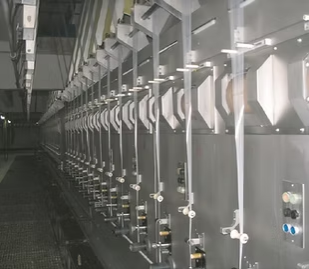Crack Bridging Mechanisms of Polyvinyl Alcohol Fibers in HPC
- pioneerfiber

- Aug 25
- 3 min read
Updated: Nov 13

Understanding Crack Formation in High-Performance Concrete (HPC)
High-Performance Concrete (HPC) is known for its superior mechanical properties, including compressive strength, low permeability, and enhanced durability. However, due to its dense microstructure and low water-to-cement ratio, HPC is more prone to early-age cracking during curing and hardening stages.
Why Cracking Is a Critical Issue
Even microscopic cracks can compromise structural integrity, allowing moisture and aggressive chemicals to penetrate the matrix. Over time, this leads to reinforcement corrosion, reduced service life, and increased maintenance costs — especially in infrastructure exposed to harsh environments.
The Role of Polyvinyl Alcohol Fibers in Crack Bridging
Polyvinyl alcohol (PVA) fibers have emerged as one of the most effective synthetic fibers for mitigating crack propagation in HPC. Their unique mechanical and chemical properties allow them to act as internal reinforcements that bridge cracks at both macro and micro levels.
How Do PVA Fibers Bridge Cracks?
When a crack initiates in HPC, the randomly dispersed PVA fibers intercept the crack path and resist further opening by transferring stress across the crack faces. This phenomenon — known as crack bridging — significantly improves the post-cracking behavior of concrete, enhancing ductility and energy absorption capacity.
Key Mechanisms Invvolved:
Fiber Pull-Out Resistance: The bond between the fiber surface and cementitious matrix determines how much force is required to pull the fiber out of the crack plane.
Fiber Breakage Resistance: Some fibers may break under extreme tensile stress, but their high tensile strength delays failure.
Multiple Crack Development: Instead of forming one major crack, the presence of fibers encourages the formation of multiple fine cracks, distributing strain more evenly.
Fiber-Matrix Interaction: The Science Behind Effective Bridging
The effectiveness of PVA fibers in crack bridging depends heavily on the interfacial transition zone (ITZ) between the fiber and surrounding cement paste.
Surface Modification for Enhanced Bonding
Manufacturers often treat PVA fibers with special coatings or physical texturing to improve adhesion with the cement matrix. This increases the frictional and mechanical interlocking forces that help anchor the fiber within the concrete, thereby improving load transfer efficiency.
Mechanical Properties That Enable Crack Control
PVA fibers possess:
High tensile strength (up to 1,600 MPa)
Excellent flexural toughness
Good chemical resistance
Strong bond performance with cementitious materials
These characteristics make them ideal for reinforcing HPC where dimensional stability and long-term durability are essential.
Real-World Applications and Performance Benefits
The use of PVA fibers in HPC has gained traction across a wide range of applications, particularly in infrastructure projects requiring high resilience and minimal maintenance.

Infrastructure Use Cases
Bridge decks – Reduced spalling and delamination under cyclic loading
Tunnel linings – Improved fire resistance and crack control
Marine structures – Enhanced protection against chloride ingress and corrosion
Industrial flooring – Superior impact resistance and abrasion tolerance
Long-Term Durability Advantages
Structures incorporating PVA fibers show slower degradation over time, even under repeated thermal cycling, freeze-thaw exposure, and chemical attack. This makes them a cost-effective solution for extending service life and reducing lifecycle costs.
Innovation and Future Trends in Fiber-Reinforced Cementitious Systems
As construction demands evolve, so too does the development of fiber technology. Researchers are exploring hybrid systems combining PVA fibers with other types of fibers (e.g., steel, carbon) to achieve multi-scale reinforcement.
Toward Smart and Sustainable Solutions
Emerging trends include:
Bio-based alternatives to synthetic fibers
Functionalized fibers with sensing capabilities
Recyclable fiber composites for green construction
These innovations aim to further enhance the performance and environmental profile of fiber-reinforced concrete systems.
Explore PIONEER’s range of concrete reinforcement fibers and how they improve concrete properties. Visit our website: www.pioneerfibre.com
Micro fiber >> Learn More
Macro fiber >> Learn More
Steel fiber >> Learn More
Asphalt fiber >> Learn More
Contact us today to request samples, technical data, or a custom solution for your project.
Email: Sales@pioneerfibre.com | Email: Support@pioneerfibre.com
WhatsApp: +1 (929) 569-9989 | +86 151-6240-5106













Comments